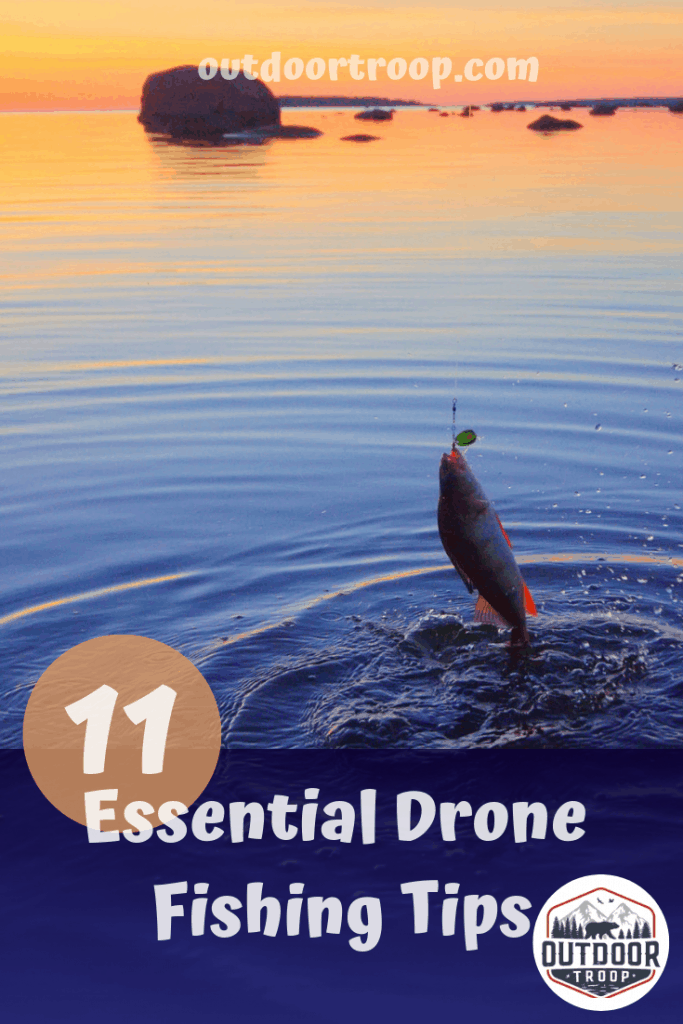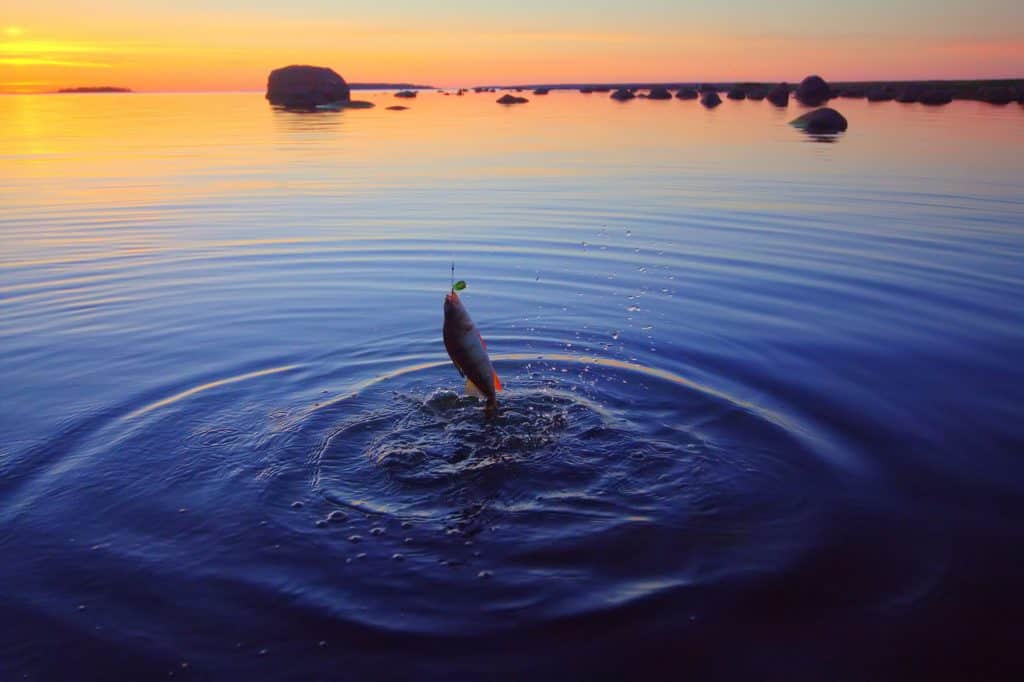
Drone fishing is sweeping the nation, and many people are feeling the need to get into it. My job is to make sure that you know what you are doing when you try it for yourself.
With these 11 essential tips and
Tip #1: Practice Makes Perfect
Many people that get into drone fishing drive out to their perfect spot for drone fishing and open the drone out there. This is a very bad idea.
My #1 tip for beginners is to open your new fishing drone or whatever you purchased and familiarize yourself with its range, battery life, and most importantly take it out for a test spin on the dry ground.
Although I am sure you are anxious to get out there and snag some of the best catches of your life with your new equipment, it is dangerous to be unfamiliar with a drone and then fly it out into deep waters without first knowing how far you can fly it, how to fly it, and and how to operate your bait dropping mechanism.
For those that are unfamiliar with flying a drone, it can be a bit tricky to learn. It takes some practice to know how to fly, steer, and especially land your drone.
It would be very unfortunate to make a mistake when you are 500 meters out into the ocean and lose your brand new drone.
Don’t make that mistake. Take things slow and learn the right way. Fishing is one of my favorite pastimes because it’s really relaxing with the occasional spark of excitement. Losing $2,000 worth in hardware is not relaxing.
Always test out every piece of equipment before using it on the water. People often buy every piece of the puzzle all at once, but sometimes it is a better idea to slowly add things so that you don’t mess up your groove.
Drone fishing isn’t something that comes easy to everyone. After all, learning how to fly a drone and learning how to become a good fisherman are challenging enough on their own.
Stewart Larson – Drone Enthusiast
Tip #2: Be Aware of Your Takeoff Zone
Many drones have a feature referred to as the “return to home”. This function allows the drone to return to the point where it took off from within several yards accuracy.
This is really important to remember. We wouldn’t want your drone scaring some other fisherman that is just trying to enjoy his day, or even worse getting run over by a car!
To properly protect your drone and the safety of others, always make a little area designated for takeoff and landing. This is best created with some small raised markers that are very easily recognizable by anybody walking or driving by.
This will ensure the safety of your drone and people. I know I would be mad if a drone decided to land on my family picnic.
Tip #3: Beware of Dogs
If you have ever seen a dog get really angry at a Roomba Vacuum, then you know how animals can react to robots of any kind. It would be really sad for both you and the dog if your drone was attacked by a dog.
Be sure that you know how your pets react to your drone before letting them too close to it.
Try and choose a spot that dogs are not allowed to roam freely, as your drone will be in danger. If you do not have a choice, then try to always be vigilant, and warn the dog owners that you have a drone nearby.
In any situation, just be aware of this fact. Many people are not and come to regret it.
Tip #4: Use a Stronger Line
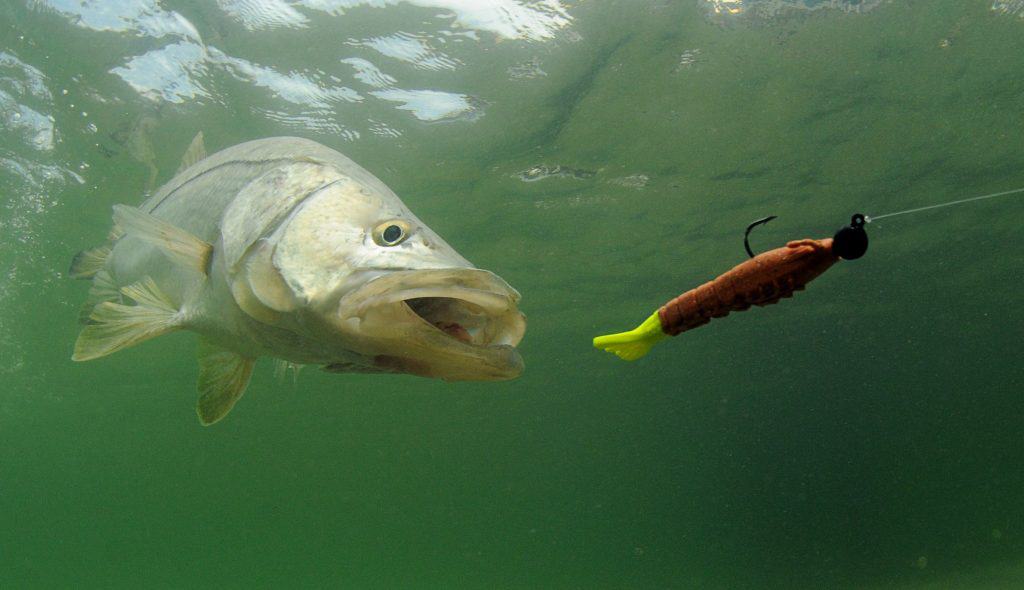
Drone fishing allows the average Joe to have access to new waters. You now have the potential of a much larger catch. People find that their line snaps much more often because they were not expecting the size of their catch.
Drone fishing is a whole new ballgame, and you need a line that can handle the stress. Although almost any rod and reel can be used, you need to be prepared.
Here are some minimum requirements:
- Rod and line weight rating of 25 lbs or more.
- The fishing reel should be an overhead spool to minimize the risk of jamming.
- Line length needs to be 100 feet more than planned cast length. This depends on the range of your drone.
Some people even suggest using an electric reel because of the sheer length of line that you have to pull in. If you might have trouble fighting a tuna from the beach, then it might be a great investment.
For those on a budget, however, just make sure to eat your spinach like Popeye!
Tip #5: Get the Right Drone
Many people want to go with a budget option, and just get something that will fly out and drop their bait. I disagree with these people.
Drone fishing is for people that don’t want to invest in a boat but still want to access places that are out of reach. That being said, you should not buy a cheap drone. Although appealing, these drones will not do what you want them to.
Unless all you are looking for is an eye in the sky, cheaper drones are not going to hold up to the abuse that drone fishing requires.
The most important trait in a fishing drone is waterproofing and floatation.
You need a drone with characteristics specifically created for drone fishing.
The most important trait is water-proofing and floatation. There are many drones out there that are designed for taking pretty pictures, racing, or other random applications. These drones might do the job at first, but at the first exposure to the elements, they will fail.
Don’t go the cheap route.
Find a drone that is made for fishing. These drones will be so much better in the short and long run. The cheaper drones will require you to purchase a bait release system which you will have to install yourself.
Sometimes they are not designed to carry much of a payload and you will find it is unable to carry your bait to the desired location. Some drones are designed for short flights to take pictures, and not have many functions beyond that.
If you have the money for it, you can find drones that not only will carry your bait out for you but will also use their built-in fish finder to tell you where the best place to drop your line is.
How amazing is that? At that point, you are using the same tools normally reserved for those in fancy fishing boats.
Even if you have to pay double for a drone that is fishing ready, you will not regret it. Save a little longer and get what you need, otherwise you might just be throwing your money into the lake.
You get what you pay for.
Gabriel Bell
Tip #6: Bring a Friend
If you followed my first tip, you quickly discovered how much focus flying a drone requires. If you don’t have somebody with you, you might make a grave mistake.
The second set of hands is there to hold the rod and make sure that enough line is being let out of the reel to ensure the drone’s flight is true. If you try and do it by yourself you might find your drone plopping down in the water to swim with the fishes, and you will have to go for a swim to retrieve it.
Although swimming is fun, you are here to fish. It can’t be too hard to find a fishing buddy that wants to help you try out your new technology.
If you have something to hold your rod after your drone makes its first trip out to sea, you might be able to make another quick trip with your friend’s line. Every fisherman knows that your chances of success double with two lines in the water.
What if I have no choice?
If you absolutely have to go by yourself, then all is not lost. Just make sure you have something to anchor your rod really well. Test your chosen method at home, and make sure you have the procedure down first.
Ensure that you are a pro flyer, and will not crash your drone into your rod. Take the time to practice and you will not regret it.
Tip #7: Keep an Eye on Your Line
Even if you know you have plenty of line, it is important to watch it closely. You will be using a line that you have never seen before, and you might be surprised at how fast you can run out.
Drones fly a lot farther than you might realize, and your line will not be straight. There will be plenty of slack in your line as you fly. Make sure and watch your line as you fly, because if you run out, your drone might get damaged by the abrupt stop.
An easy way to protect against this damage is to make the last part of your line a different color, which creates an early warning that will tell you when to drop your bait. I recommend several hundred feet of another bright color.
Again, I beg you to please test everything out beforehand very slowly. Make sure your reel can handle that much line being taken in and out so quickly without becoming a tangled mess.
The more preparation you have, the smoother this will go.
Tip #8: Be Aware of the Local Laws
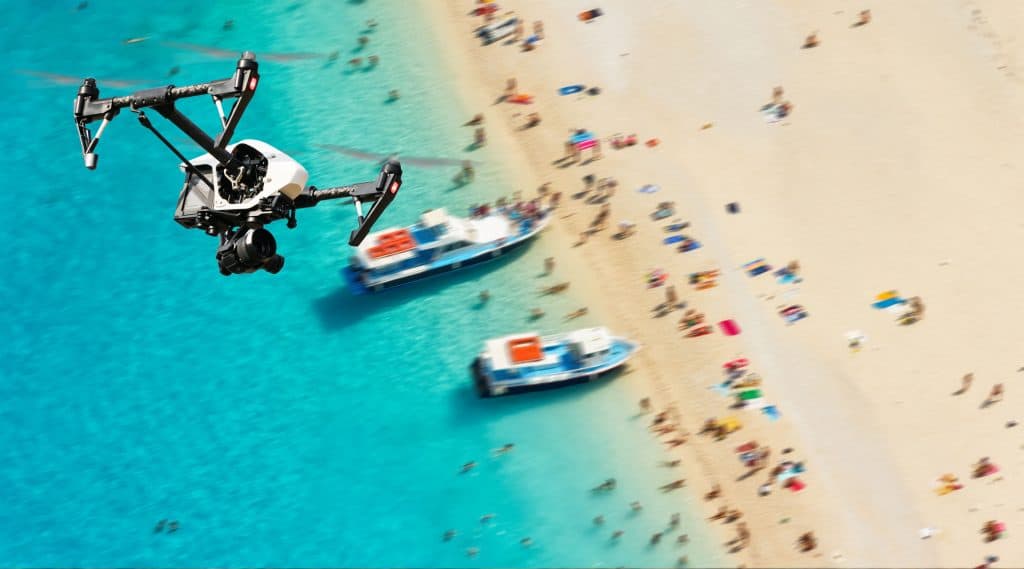
Every state has different laws when it comes to drones. Some areas require a license or registration, while others state that it is illegal to photograph people with drones. Be careful not to break any of these rules.
Here are some of the laws that are in the US:
- Register your UAS (drone) if it weighs more than 0.55 pounds and less than 55 pounds
- Label your UAS (drone) with your registration number (acquired from the link above)
- Read and understand all safety guidelines
- Fly at or below 400 feet
- Keep your UAS (drone) within sight
- Never fly near other aircraft, especially near airports
- Never fly over groups of people
- Never fly over stadiums or sports events
- Never fly near emergency response efforts such as fires
- Never fly under the influence of alcohol or drugs. (You are operating expensive equipment!)
- Be aware of airspace requirements
By following these rules, you will be confident that what you are doing is okay. People might get angry when they see you with this new technology and claim you aren’t allowed to do it.
If you are aware of the laws in your area, you can avoid conflict. Hopefully, you don’t have this experience, but you need to be prepared.
If you are on private land, make sure that the owners are aware of what you are doing, as plenty of people think it’s a good idea to shoot drones out of the sky. Be considerate of others and their space.
Tip #9: Know When You Should Not Use a Drone
Much like regular fishing, drone fishing can be prevented by circumstances out of your control. I believe that you will know the right and wrong times almost completely by instinct.
Obviously, you shouldn’t fly if it is windy out. You have a very expensive piece of equipment in the sky, and wind might make you lose control of it.
Even waterproof drones are in danger of being lost at sea if it is choppy enough. Seeing that most people will not fish anyway if it is windy, you probably already know that.
You shouldn’t fly a fishing drone if it is really windy outside.
Rain is tricky. I am not a fan of fishing in the rain but every fisherman has their tricks. The question at hand is: Can my drone handle the rain?
The answer is probably. Even many of the cheaper drones can handle a light sprinkle, but if the rain gets intense it can put your drone in the water.
If you are the type of person that is extreme enough to be out while it is dumping rain, you might need a submersible drone, which does exist.
The Swellpro 3 has the type of capability you need.
The trick is knowing what your equipment can
Tip #10: Experiment
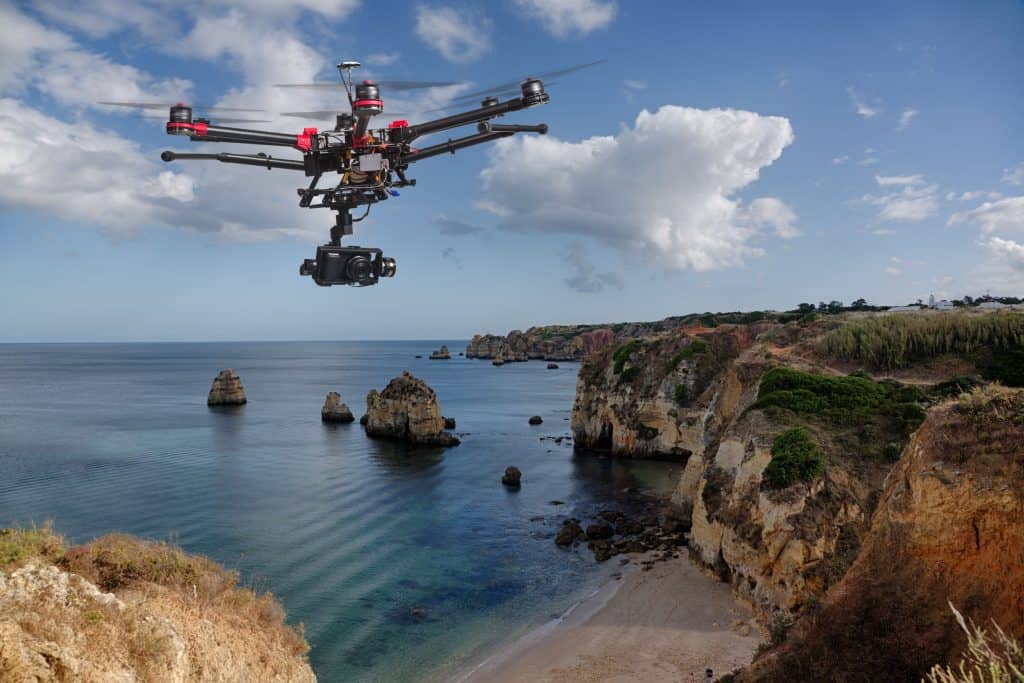
Drone fishing is such a new hobby that many things are still being developed. There are plenty of new combinations of line, bait, sinkers, knots, etc. that have not been tested yet.
If you embrace drone fishing, you will quickly enter uncharted waters. You will try things that have never been tried before.
Remember when you first started fishing as a kid and you were figuring out what you did and didn’t like? I remember getting so excited to go to the store and find the lure that I thought was going to bring in the big one.
That same excitement will happen as you embrace this new form of fishing.
Try new things. Try fishing from weird places that only a drone could allow. Don’t be afraid to use your drone in ways it wasn’t intended just to see what happens.
Like I said earlier, this is new territory and you might discover a way to use a drone that changes the way we all fish.
If you have a durable and waterproof drone, then you can afford to really play around with this technology. Who knows what you might find?
Tip #11: Do Your Research
Just like anything else, go into this prepared. Before you buy any equipment, be 100% sure it will do what you want. Come up with a plan for drone fishing in your specific situation.
Sometimes drone fishing just won’t work where you are located, and that would be very unfortunate if you already purchased a drone. You can start by answering these questions:
Why?
Why is drone fishing good for your location? Why would drone fishing be better than regular fishing?
How?
How do you plan on using your drone? How will using a drone change your fishing experience? How will you pay for your drone?
What?
What equipment will you purchase? What drone works best in your situation? What will you have to do before each fishing trip that you don’t do know?
The more that you research, the more success you will have. It’s that simple. Watch plenty of YouTube and Google any questions you might have. Peruse our posts and learn as much as you can about using a drone to fish.
These tips are simple but effective. Drone fishing can be daunting, but anybody can do it with some guidance. Good luck with your drone-assisted fishing, and I hope you catch the big one!
Related questions:
How much are fishing drones? Fishing drones can cost anywhere between 1000$ and 4000$. If you want something better than consumer grade, then there is no limit to cost.
How far can a drone fly? Some drones can fly up to 2 km away from their controller, but the laws of the United S
Are drones hard to fly? For most people, it only takes a bit of practice to fly a drone well. Drones are popular because of how easy they are to fly in comparison to RC helicopters or planes.

